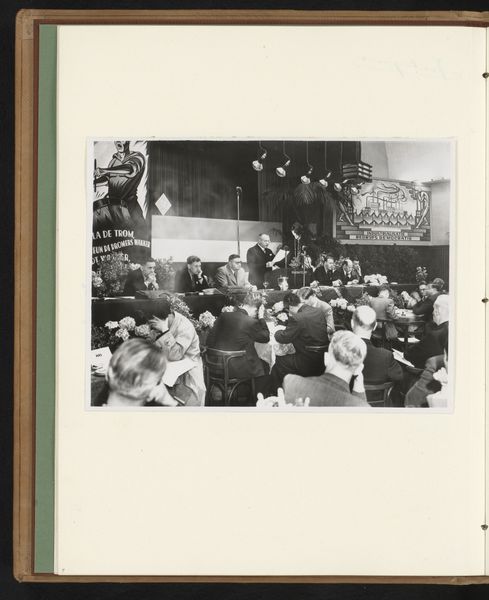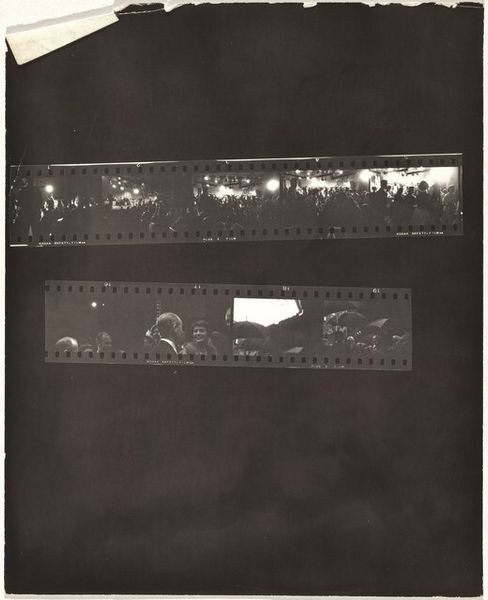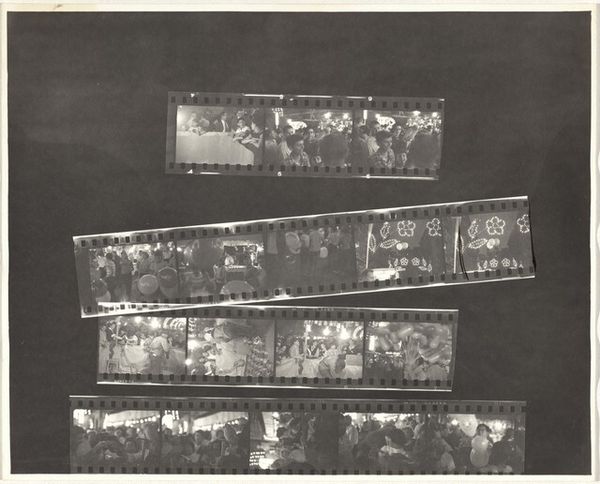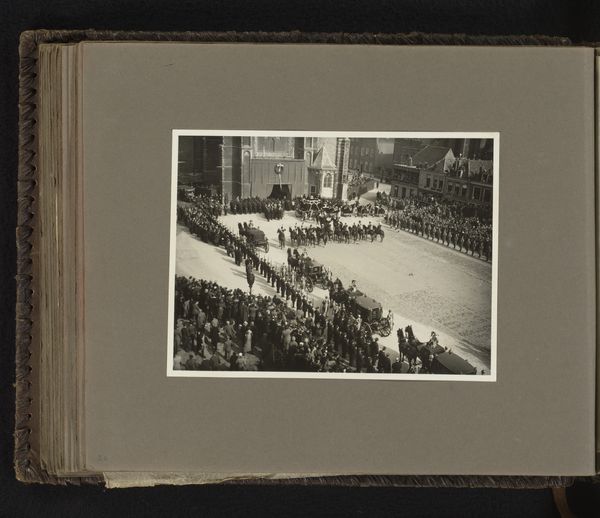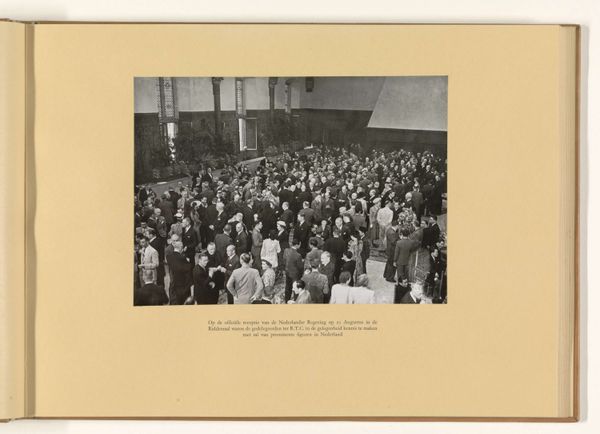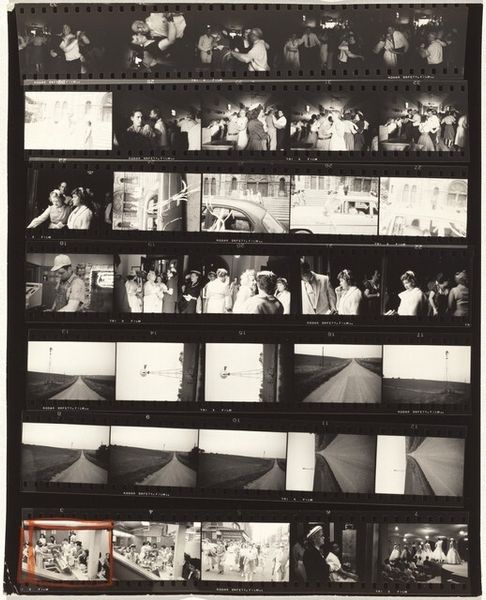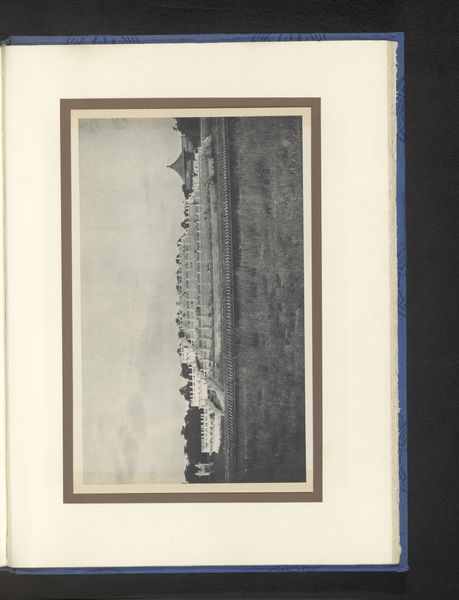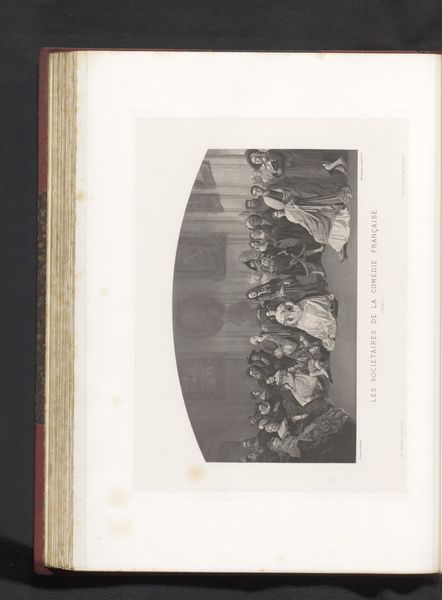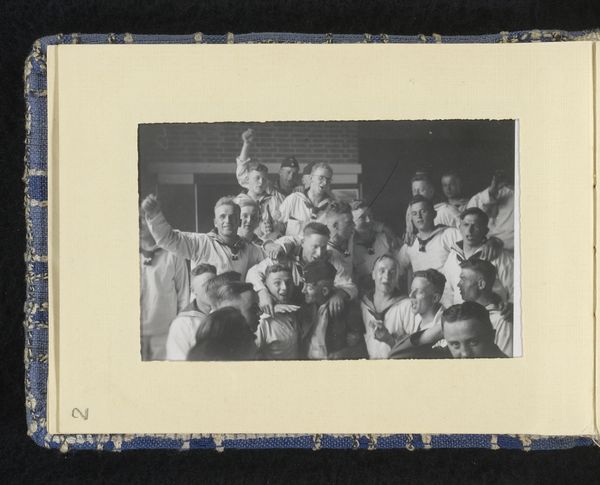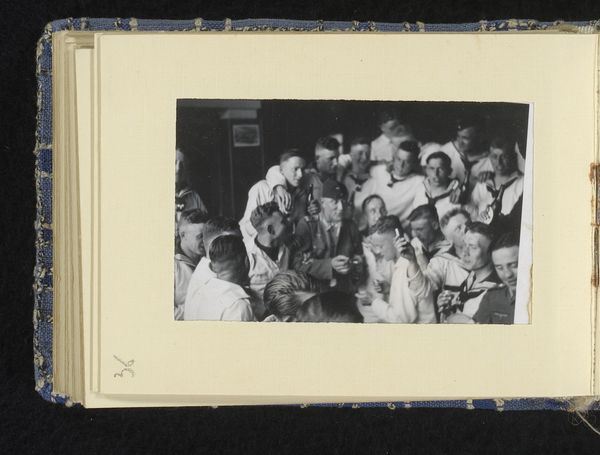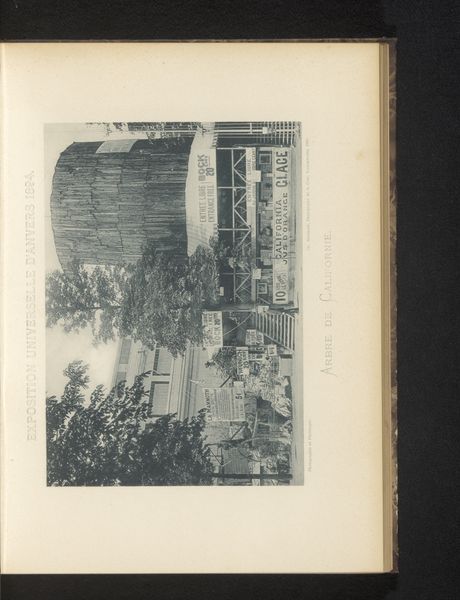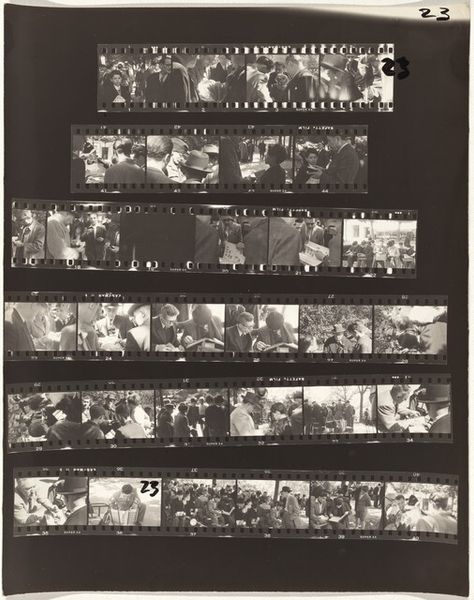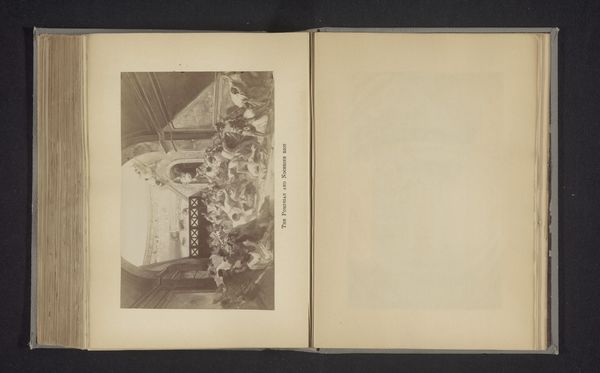
Dimensions: height 360 mm, width 275 mm
Copyright: Rijks Museum: Open Domain
Curator: What strikes me first is the density, all those heads clustered together, seemingly listening intently. It suggests a powerful sense of shared purpose and the materiality, specifically the grain of the print, gives it a historic feeling. Editor: Indeed. Let's contextualize "Blad met handtekeningen," tentatively dated 1949. What we're seeing is photojournalism, likely a documentary photograph capturing a political gathering or conference post-World War II, maybe a workers' rights meeting? Note the banner; it dominates the background, acting as a vocal declaration. The individuals assembled are probably deeply impacted by the war. What about their stories, struggles and commitment in such crucial moments? Curator: Absolutely, the backdrop shapes everything. This isn’t just an image; it's an object manufactured through photographic processes in a specific era, preserved in print, for specific ways of thinking. What type of paper was used, the printing resolution of the time...these all shape how we view this image. Look at the tonal range. How do these limitations influence composition? Editor: True, technique informs content. However, it begs questions about whose voices are represented and amplified in this visual record? Are marginalized groups present? Is the perspective neutral or agenda-driven? As it's shot on a large scale with mostly suited-up, likely male participants in the foreground, power dynamics come to mind and inevitably how they were negotiated or perpetuated within post-war society. Curator: I see the materiality reflecting social structures too. How did photojournalism like this serve specific political agendas? I wonder what level of artistic labor went into this printmaking versus other printed ephemera of the time. Did they differentiate the cultural product based on its perceived worth? Editor: Precisely! By acknowledging how art reflects not only history but current dialogues on representation, maybe this image offers starting points for critical discourse on gender parity and equity in today's socio-political gatherings. Are those tables arranged for collaboration? Did the meal that surely took place facilitate dialogue, who catered it, and how did those roles intersect with class and other types of status? Curator: Exploring such intersections certainly enriches the image! Considering production alongside the scene presented gives me greater insight into how value systems were then reproduced materially and socially. Editor: It has encouraged reflection on how such records function politically, historically, and aesthetically even now.
Comments
No comments
Be the first to comment and join the conversation on the ultimate creative platform.
